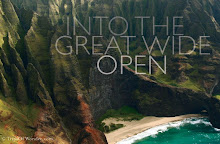
Having always paid attention to the nitty-gritty details of signs (down to the typefaces used), we got a chuckle out of Sarah Lyall's article (1/22/2009) in the N.Y. Times titled "No Snickering: That Road Sign Means Something Else". Ms. Lyall took the time to document some utterly embarrassing and unfortunately very real place names in Britain including Butt Hole Road, Spanker Lane, Titty Ho, and Penistone.

Dream Street, Pittsburgh, 1955-56
As is usually the case with us, inevitably we find a connection between art and life. After reading the news article, the photographer W. Eugene Smith immediately came to mind, albeit on a higher and certainly more romantic plane. Illustrated here are two inspirational photographs of otherwise "ordinary" street signs that Smith took in his photo essay on Pittsburgh, Pennsylvania.

Ophelia and Hamlet Streets, Pittsburgh, 1955-56
W. Eugene Smith was a noted photojournalist whose powerful images graced the pages of Life magazine in the 1940s to 50s. William S. Johnson wrote of Smith "...committed to concerns of the human spirit, to documenting and personalizing the ravages of war, to affirming life, and to exposing injustice and the abuse of power wherever he found it. He believed that through a sequence of pictures he could most accurately present truth and that the revelation of truth would in turn inspire change."
Published photographic essays by W. Eugene Smith such as "Country Doctor (Dr. Ernest Ceriani)", "Nurse Midwife (Maude Callen)" and "Minamata (mercury poisoning in a Japanese fishing village)" certainly confirm that the best art can and must continue to speak the truth to an often misguided public.

Tomoku Uemura In Her Bath, Minamata, 1972

Three Generations of Welsh Miners, 1950

Madness, 1959
Bob Heischman, an old college drawing professor of ours used to gently prod his students to try drawing with "darker darks and lighter lights." Photographically, no one did it better than W. Eugene Smith in setting a mood with his darks and lights. Witness what has to be acknowledged as one of the greatest jazz portraits of all time, used for the cover of 1965's "Monk" LP. I'll have mine Straight, No Chaser please.

Thelonious Monk, c.1965







